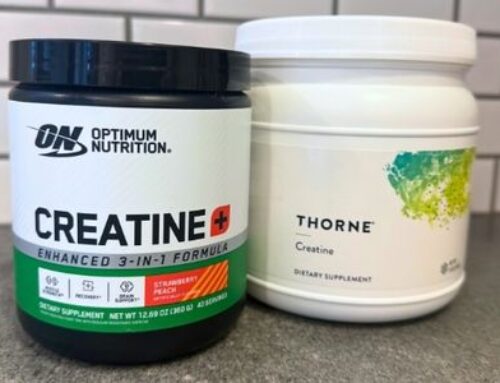The concept of plant-based or plant-focused eating is one of increased popularity and health benefits; we seem to be gaining more and more knowledge on the importance of plants taking the spotlight in our diets. But when it comes to soy, confusion on whether it is good for us or detrimental to our health tends to ensue.
It seems as though there are people on opposite ends who eat and enjoy it on a regular basis in multiple forms, and then those who avoid it all cost, being concerned about its effects on their hormones.
Soy is beneficial for our health, plain and simple. However, there is more explanation on this!
Soy is a plant protein, isolated from the soybean, found in a multitude of foods like:
● Tofu
● Tempeh
● Miso
● Edamame
● Soy sauce
● Soy protein
● Soy lecithin
● Soy milk
It is a great source of plant-based protein, especially for those who follow vegetarian or vegan lifestyles. Unlike other plant proteins, soy contains all 9 essential amino acids that the body cannot make on its own.
Soy has also been attributed to increasing fiber intake, reducing cardiovascular disease risk, reducing cholesterol, and lessening symptoms of menopause. It is most commonly known for its positive effects on long term heart health, as it goes through metabolic processes that aid in lowering LDL cholesterol and raising HDL cholesterol. There has also been research to show that soy consumption can have a positive effect on skin health, reducing appearance of wrinkles and pigmentation over time due to the isoflavone content.
But what about the worrisome effects on hormones?
One claim is that soy has the ability to block thyroid hormones due to the goitrogen content.
However, human studies show that soy isoflavones had no effect on blocking iodine or thyroid hormones, leading to no negative impact.
Another claim is that the phytoestrogen content in soy can create an increased risk of breast cancer. While soy does contain phytoestrogen, it is not the same as estrogen and does not function in the same way. Essentially, these claims have been baseless, and made us to believe that soy is detrimental to our health. When really all we need to look at is the product’s sourcing and production to make sure it is healthy, just like many other foods we eat.
So, what kind of soy and how much should we be eating?
Soy, in moderation, is greatly beneficial to most people. Moderation tends to look like two servings per day of soy, which means there really isn’t anything to worry about in consuming too much of it, as most of us do not nearly get that in our daily diets.
It is important to stick to non-GMO options and minimally processed soy when possible. This includes edamame, tofu, tempeh, miso, and soy milk. They are all wonderful additions for plant-based protein, but my favorite is tempeh.
Tempeh is created slightly differently than tofu, but it is still made up of soybeans. In tempeh, the soybeans are cooked, fermented, and then packed. It is one of the most minimally processed forms of soy out there, allowing it to have an amazing nutrition profile and nutrient density. It is even higher than tofu in protein, fiber, vitamins, and prebiotics.
New to tempeh? Here is one of my favorite dishes made by Laura Wright, a plant-based recipe developer and author of The First Mess Cookbook:
● Kimchi Fried Rice with Smokey Tempeh
The recipe includes more fermented benefits from kimchi, fiber in brown rice, phytonutrients from broccoli and scallions, and plenty of spice and heat for metabolic and anti-inflammatory benefits. Plus, it is delicious and has become a staple in my house – enjoy!





